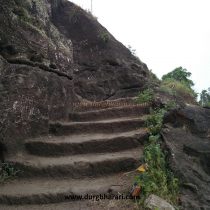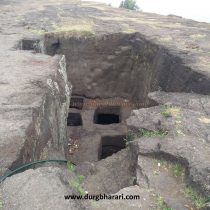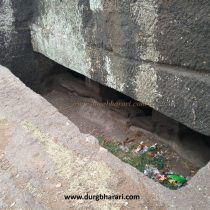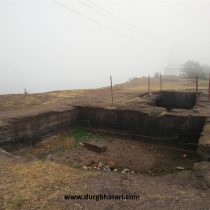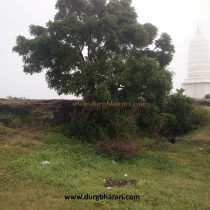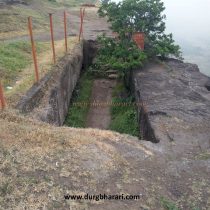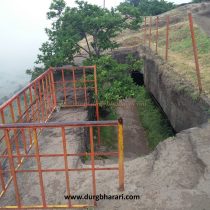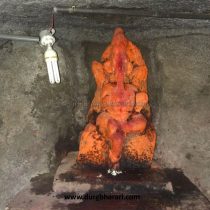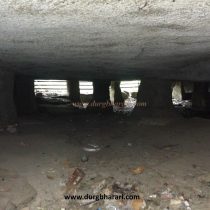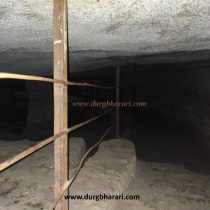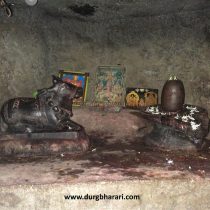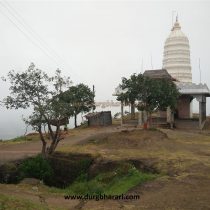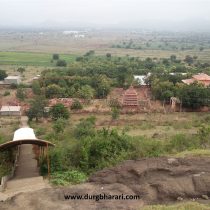BHANGASHIGAD
TYPE : HILL FORT
DISTRICT : AURANGABAD
HEIGHT : 2215 FEET
GRADE : EASY
Raigad and Devagiri are the most visited forts in Maharashtra. But Bhangsigad, which is at a short distance from Devagiri, is not very familiar to anyone. Apart from this fort and Devgiri on the Aurangabad-Devagiri route, there are no special hills in this area. Due to the cliffs around the fort, the fort attracts our attention from a far distance. Most of the structures on the fort are carved in the rock. Due to the Bhangsai Devi temple in the basement on the fort, the people of Aurangabad know this fort as Bhangsimatagad. Bhangsaimata or Bhangsigad is at a distance of 14 km from Aurangabad. The Sharanpur fork is on the right-hand side of the wharf on the Aurangabad-Devagiri road. From there you can reach the base of the fort by public transport.
...
There is an ashram at the foot of Bhangsigad and construction of a new temple is in progress. Due to the temple on the fort, steps have been built to go up and you can reach the top of the fort in half an hour. After 20 minutes of climbing the steps, we reach a cave carved in the rock on the right. After seeing this cave, you can see the steps carved in the rock of the original construction of the fort and the real fort begins from here. You enter the fort through a north-facing entrance carved into the rock after crossing a broken ladder. The gate of the fort has been destroyed and there are some remnants of the ramparts here showing their existence. The head of the fort, which is steeping east-west, is 2215 feet above the sea level and is spread over about two and a half acres. Upon entering the fort, a new temple of Goddess Bhangsai can be seen built in the front. On the way to the temple, you can see a half-extinguished water tank with a pillar in front of the temple. In the basement of the Bhangsaidevi temple, you can see the idol of the goddess. This cave of the goddess is weighed on stone pillars and can be reached by crawling through a small path carved in its corner. This cave has a huge cistern with pillars. There are a total of 25 pillars in this cave. The cave is carved in two layers and there is a stairway on the south side to get down to the cave. In one corner of this cave, there are idols of Lord Ganesha, Shivlings, and Nandi. Seeing this, you should take the steps to the south of the cave. Behind the temple of Goddess Bhangsai, there are medium-sized cisterns carved in the rock. The fort has some caves carved along the ridge and they have reservoirs of water. The attraction of these tanks is the carved pillars. From here, turn left and descend. Here you can see the remains of the second south-facing gate of the fort. In front of this door are some other caves carved in the rock and they are almost extinguished. After seeing this door, come back to the top of the fort. Seeing this, you must go ahead and you will find a cistern carved in the rock. Four separate small tanks have been carved in the inner belly of the cistern, which has a reservoir of water inside. Next to this cistern is a Shivling and Nandi carved in the rock. next to this idol, two more large water cisterns are there and a small house near to it has been built recently. In one of these cisterns, another small tank appears to have been carved in the middle. From here, on the north side of the fort, take steps leading down from the fort. When you go down there, you will find a tank with three different parts. There is a round window carved in the front wall of this tank. After seeing this, you should come up and return to the entrance after seeing the western end of the fort. This is where your fort round ends. Fort round takes about an hour. From the fort, Aurangabad hills and Devagiri can be seen to the west. Although the history of the fort is not available today, the cisterns and caves carved in the rock on the fort testify that the fort has existed since ancient times.
© Suresh Nimbalkar

